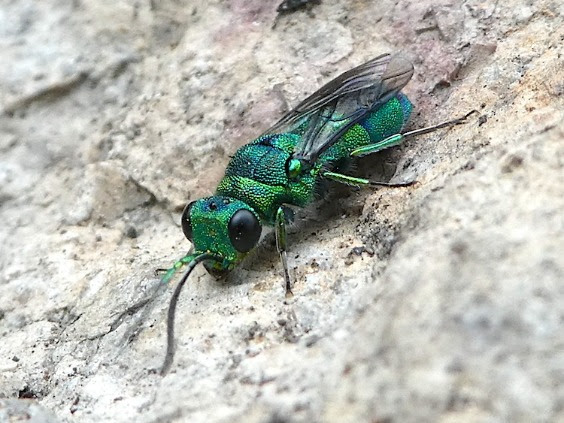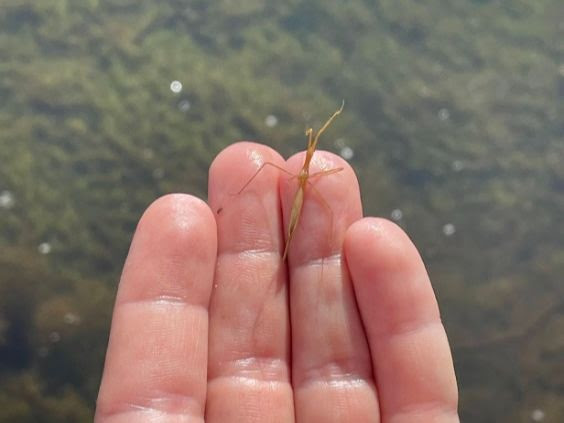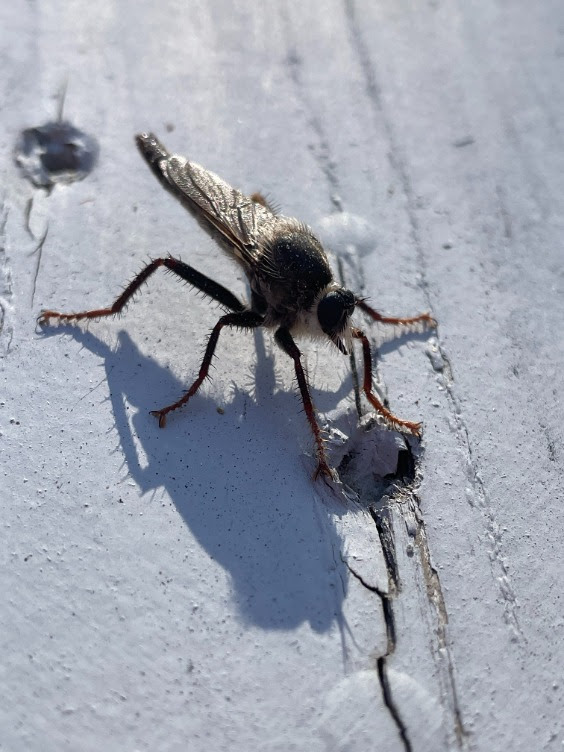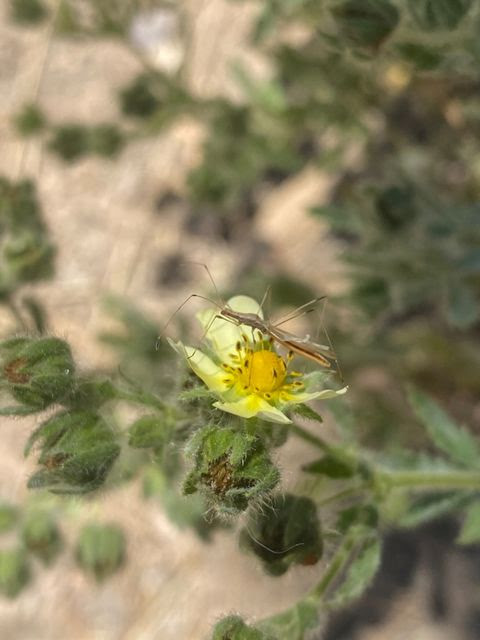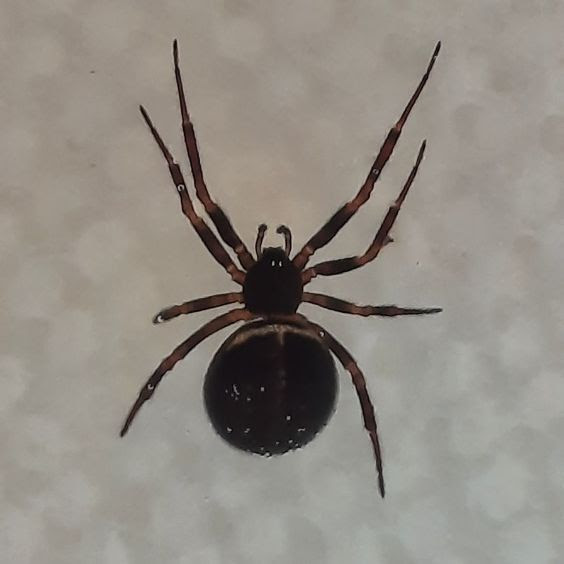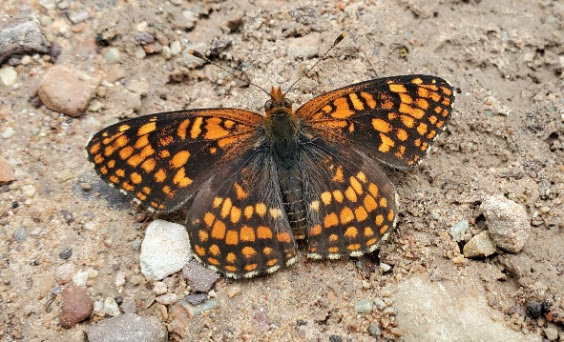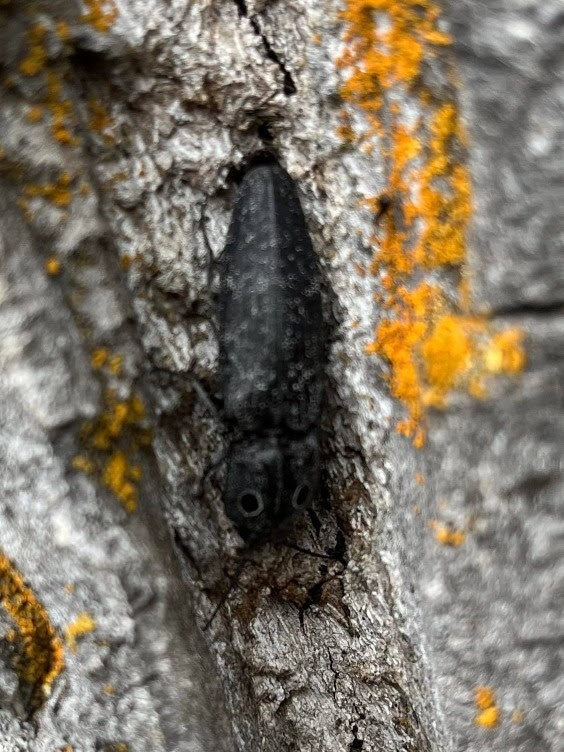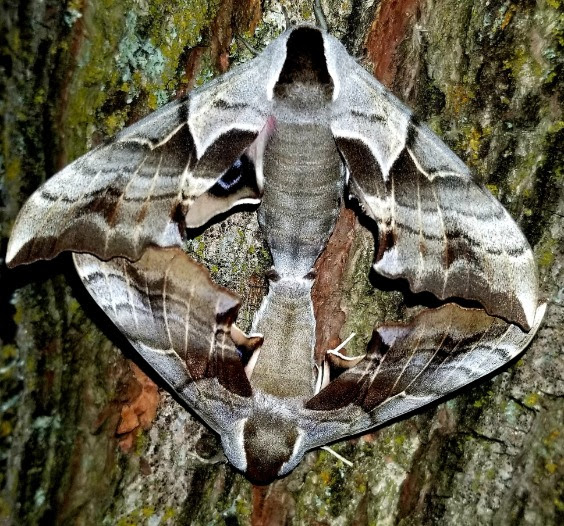These tiny wasps are primarily parasites in the nests of other wasps or bees. Their metallic green color, combined with their high activity level, make them look like little jewels bouncing around. Size: Small, […]
Read MoreArticles by: Butterfly House
Fireweed Clearwing Moth (Albuna pyramidalis)
Clearwing moths (family Sesiidae) are weird and wonderful, mimicking wasps in surprising detail. In many, the wings have large areas free of scales. Fireweed Clearwing Moths fly by day and […]
Read MoreMacculloch’s Forester (Androloma maccullochii)
The Macculloch’s flies in spring and summer, generally earlier at low elevations and later at higher elevations. Adults visit flowers, with individuals noted taking nectar from Kinnikinnick (Arctostaphylos uva-ursi) in […]
Read MoreWater Scorpion (genus Ranatra)
If you’ve ever walked the shoreline of a small, shallow western Montana pond or bog, you’ve likely walked right by a water scorpion. Looking pretty much like a piece of […]
Read MoreRobber Fly (family Asilidae)
Perfectly described in the Kaufman Field Guide to North America, robber flies “are to other insects what falcons are to other birds: swift predators on the wing.” They perch in open habitat waiting […]
Read MoreStilt Bug (Neoneides muticus)
One look and you’ll know how these bugs earned their name. Delicate, slender and long-legged, stilt bugs are typically less than 1 centimeter long and are often found on plants […]
Read MoreCobweb Spider (Steatoda borealis)
Cobwebs spiders (family Theridiidae) are often housemates, wanted or otherwise. Even if you don’t see them, you may find their handiwork—messy, three-dimensional webs, with strands running in many different directions. […]
Read MoreNorthern Checkerspot (Chlosyne palla blackmorei)
This is one of several species of checkerspot butterflies in western Montana. Checkerspots are generally medium-sized, larger than crescents, and have orange and black checkered uppersides. Their flight is fairly fast, direct and […]
Read MoreWestern Eyed Click Beetle (Alaus melanops)
These large beetles (with noticeable eyespots) inhabit coniferous forests and are typically found from June through July. Their larvae live in dead or dying trees and feed on the larvae of woodborers […]
Read MoreSphinx Moth (Smerinthus ophthalmica)
The next generation of one of the most common and widespread moths in the Pacific Northwest is on its way! The adults do not feed, but caterpillars fatten up on […]
Read More